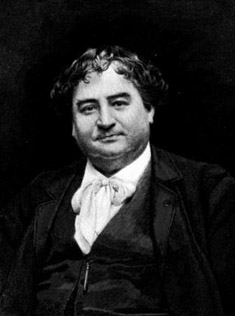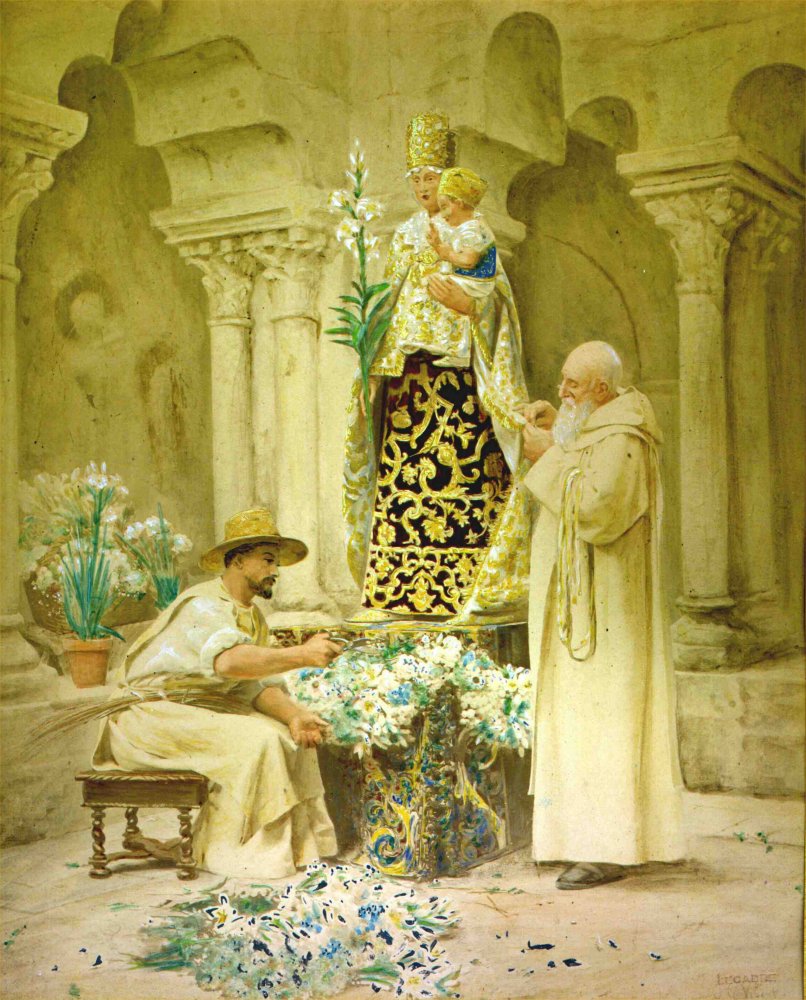| Jean Georges Vibert | |
|---|---|
 |
|
| Born | September 30, 1840 |
| Died | July 28, 1902 |
| Nationality | French |
| Work | View Complete Works |
Jean Georges Vibert was a witty man of many talents, and interests. His paintings in oils and watercolors made him a much-admired artist in his native France, as well as in America. Vibert dared to use his knowledge of colors, medium, styles, and subject matter to differentiate himself from other artists of his time. His daring satiric paintings of a hypocritical clergy and pompous government were well received during his life, although his works probably would have meant imprisonment a century earlier. His humorous attacks were viewed however, as a part of the growing democratization of Europe, and made him most famous.
The Young Vibert
Jehan, or Jean, was born in Paris, in 1840. The young Jean was considered a mediocre student, because rather than paying attention to the class master, he would draw pictures of people in his schoolbooks. Knowing that he wanted to become an artist someday, he began training with his grandfather Jean-Pierre-Marie Jazet, the well-known master engraver. Jean Georges was then mentored by Felix Joseph Barrias, and eventually he entered the Ecole des Beaux-Arts, at age sixteen, where he remained for six more years, working with the artist Francois-Edouard Picot.
Developing Artistic Career
 Becoming friends with Eduardo Zamacois, a young Spanish artist, the two traveled to Spain in the 1860’s together. Vibert collected Spanish clothing and objects, which he later used to create scenery for his compositions such as Toreros at Prayer. In 1866, the two friends worked on their Salon artwork entry called Entrance Of The Torenros together. This was quite unusual, because artists did not usually work on compositions collectively.
Becoming friends with Eduardo Zamacois, a young Spanish artist, the two traveled to Spain in the 1860’s together. Vibert collected Spanish clothing and objects, which he later used to create scenery for his compositions such as Toreros at Prayer. In 1866, the two friends worked on their Salon artwork entry called Entrance Of The Torenros together. This was quite unusual, because artists did not usually work on compositions collectively.
Painting solo, Vibert debuted at the Salon in 1863 with two genre compositions entitled The Siesta and Repentance. In 1864, he was awarded a medal for his painting Narcissus Transformed into a Flower. His turn toward genre scenes took the form of satirical clergy members, in works such as The Preening Peacock, The View, and A Marvelous Sauce. Vibert exercised a new artistic freedom through his comedic portrayal of human weaknesses, and mocking the imperfections of the clergy and monarchy.
Vibert had become the master of the anecdotal scene, which had great appeal to the more sophisticated art patrons in Paris. The popularity of his paintings spread, especially in America, including commissions from the Astor and Vanderbilt families. After being wounded at the Battle of Malmaison as a sharpshooter in the war of 1870, Vibert was recognized for his sacrifice and marked for his diversity of interests, which he pursued in the following years.
Diversity
While Spain influenced many of Vibert’s paintings, his travel to the East also affected his style of painting. Vibert shared a keen interest in detailing, as displayed by the Orientalists. Vibert also was very interested in the acceptance of watercolor medium, formalizing the Societe des Aquarellistes Francais, becoming its president, in 1878. Jean used his scientific abilities to prepare paint colors of his own, by studying the chemistry of colors. He later wrote a book of the science of painting, which he named La Science de la Peinture in 1891.
Vibert became a playwright, staging many productions, and wrote stories for The Century Magazine, based on scenes from his paintings, finding it a convenient way to advertise his works in America. In 1878, Jean placed six watercolors and seven oil paintings on exhibition in the Exposition Universelle, winning a third-class medal for his entries. Vibert was also had an active association with the stage and theatrical productions in Paris.
Jean Georges Vibert wanted his somewhat controversial art to speak for itself. He compared his works to how a father loves all of his children, though he may seldom be completely satisfied with them. Vibert was daring enough to speak through his art, was accomplished by using his many interests, his wit and style to create works of art which are displayed now at the more prestigious art museums in the United States, such as the Metropolitan Museum of Art, the Haggin Museum, and the Art Institute of Chicago.